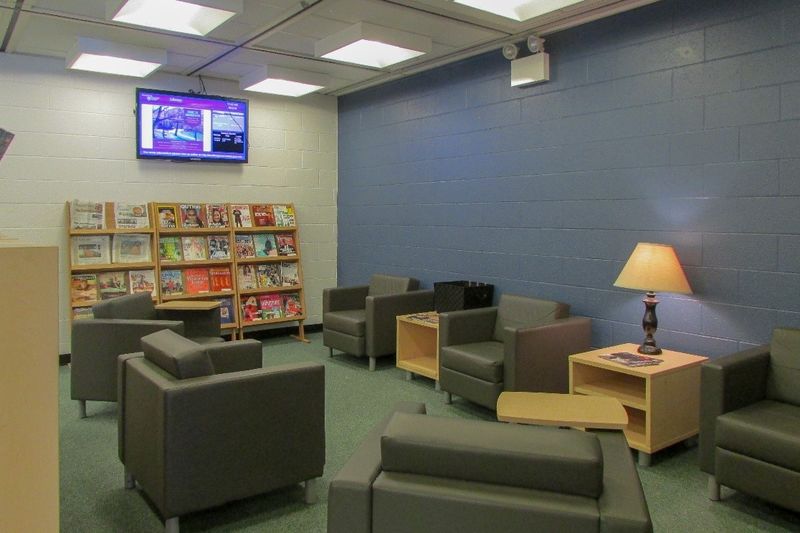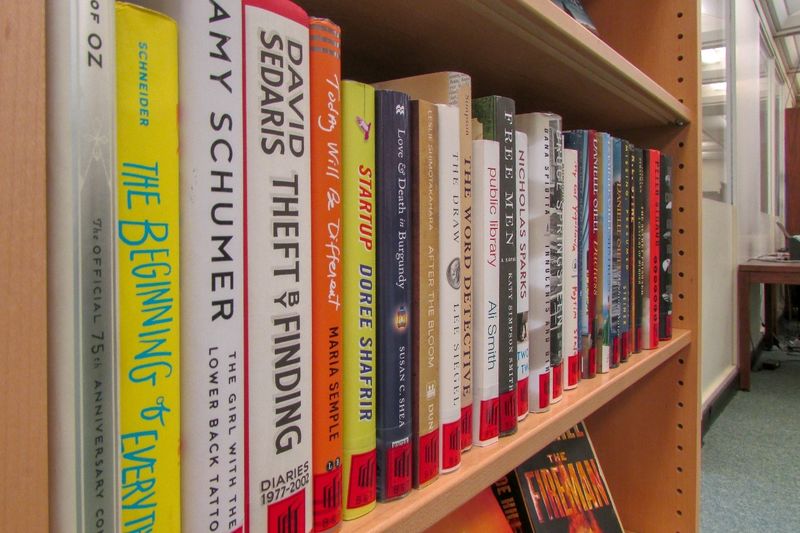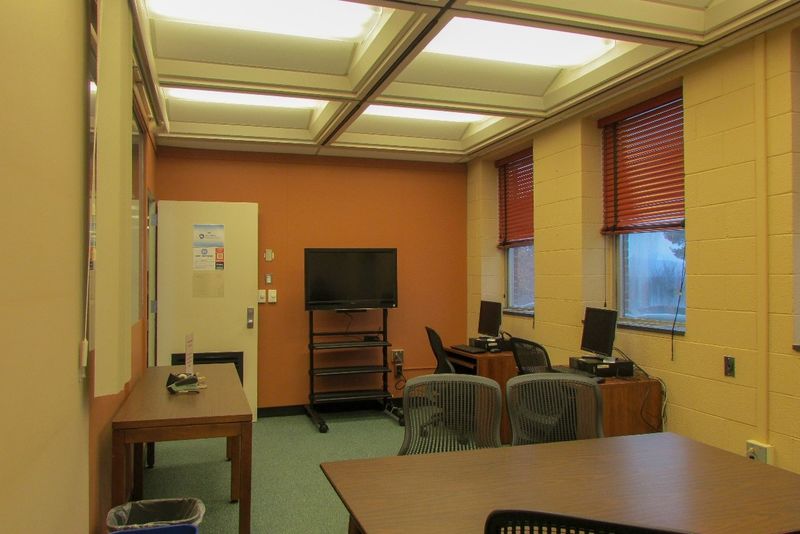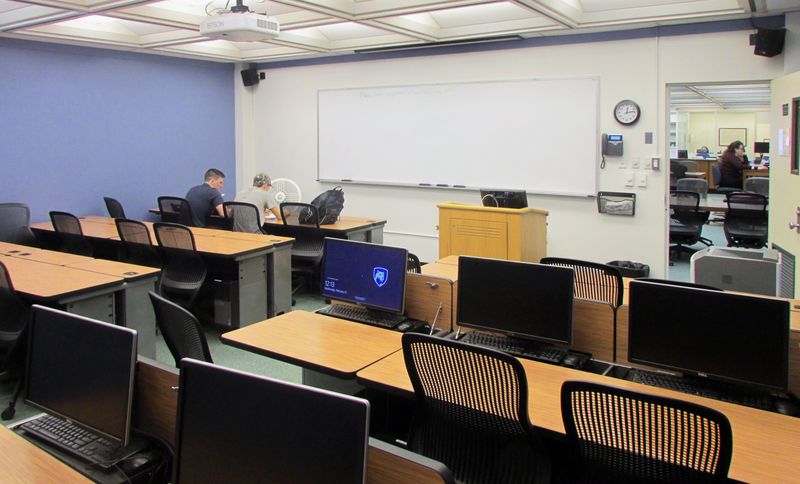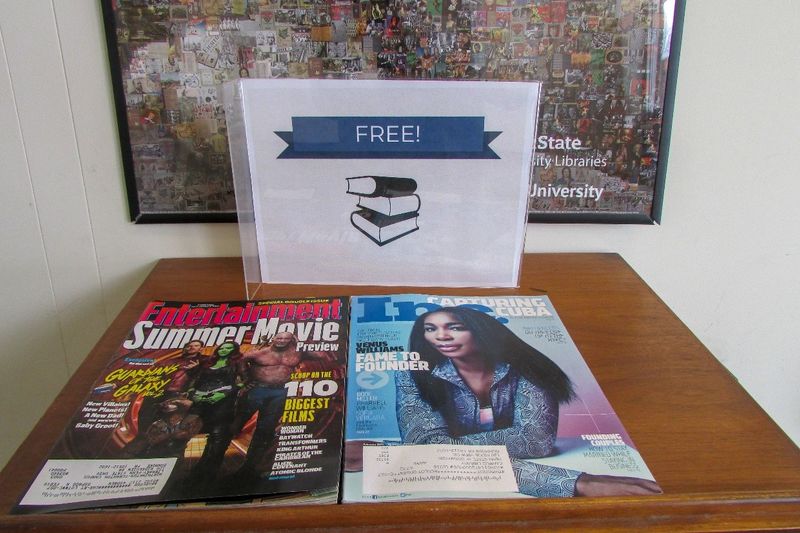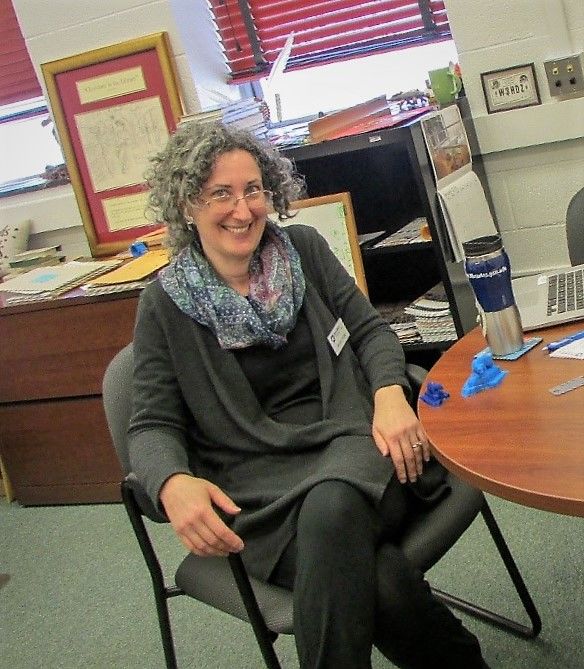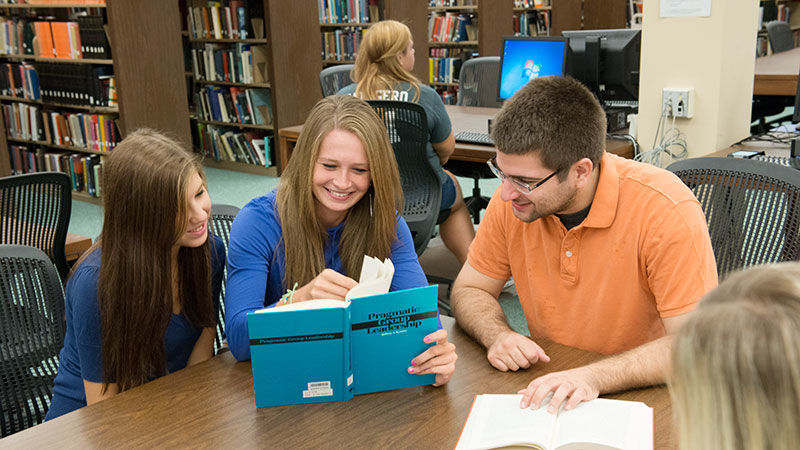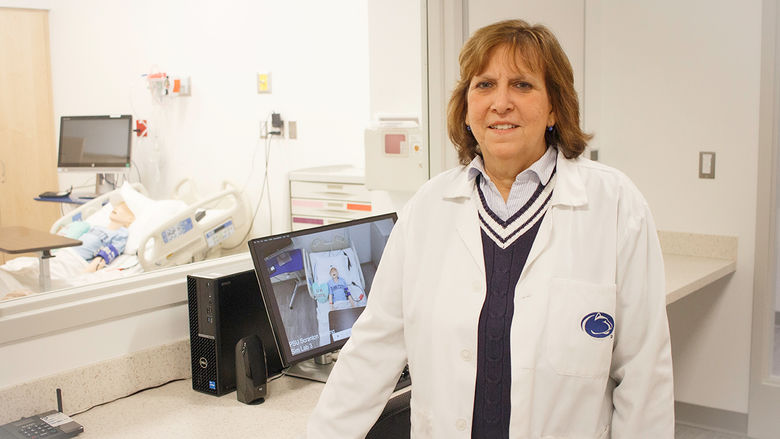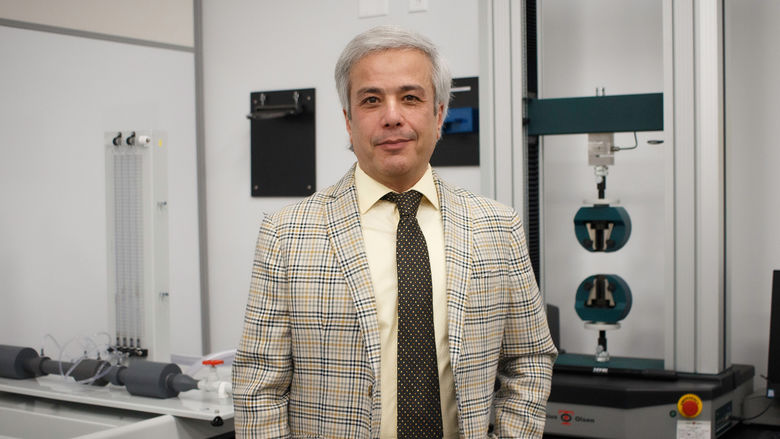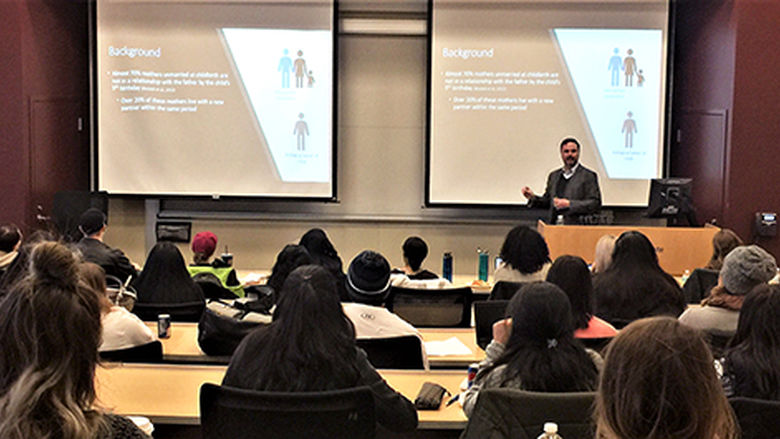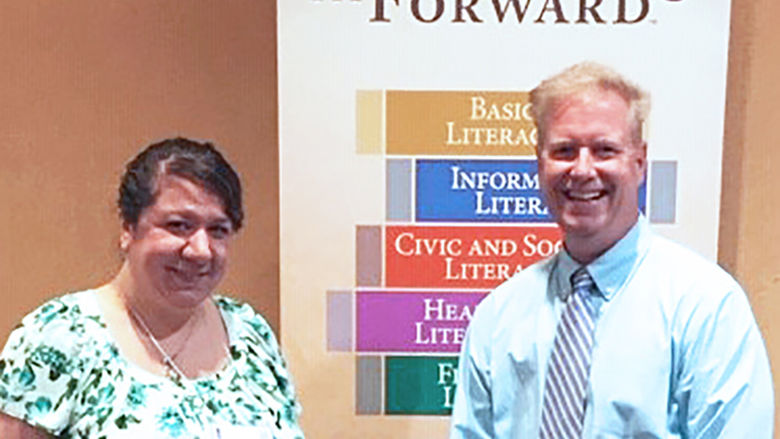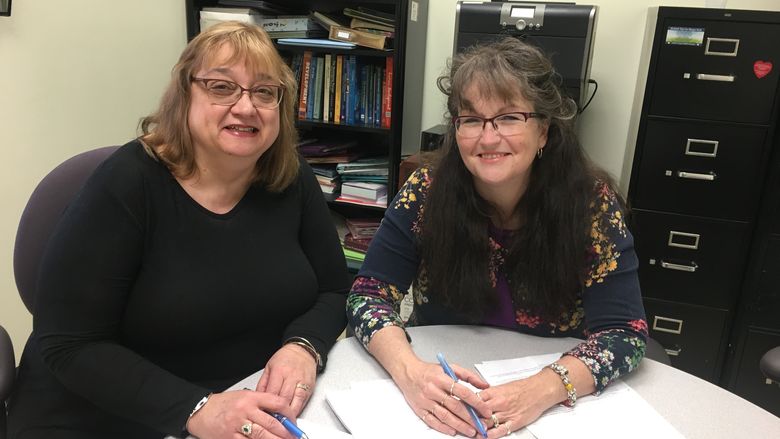Full site navigation menu
This dialog contains the full navigation menu for this site.
By: Jordan Goldman
Penn State Scranton’s library has been undergoing some changes this past year. Along with a new paint job, a new group study lounge, and a new “hydration station” water fountain, the campus library also welcomed new Head Librarian Jennie Levine Knies, who has been busy implementing even more changes.
Knies was previously the head librarian at Nesbitt Library at Penn State Wilkes-Barre and has over 15 years of experience working in research and library administration.
While at Penn State Wilkes-Barre, she implemented a 3D printing program for students and faculty, managed the campus’s undergraduate research fair, and also managed and organized the library’s archives.
Here at Penn State Scranton, Knies hopes to update the library’s facilities even further, as well as introduce more students to the resources and activities that are available to them through the University’s library system.
When asked recently what students’ most underutilized resource at the campus library was, Knies replied: “us.”
“The librarians and library staff don’t get many questions past the usual about citations and databases; we’re always here to help with anything students may need throughout the semester,” Knies said.
Knies reminds students to take full advantage of the library’s resources and faculty, since students who don’t may be missing out on a huge variety of perks available to them through their Penn State education.
For example, Penn State students may not be aware that they have free access to several online services, including Ancestry.com, the Wall Street Journal, and the New York Times. Just log in to your PSU account and you can use and view the content from these sites without having to pay monthly subscription fees.
There are also hundreds of popular DVDs and books that are available for students to borrow at their leisure, all of which are listed on Penn State Scranton’s LibraryThing page, where you can browse any of the books or movies the library currently has on the shelves.
To get to LibraryThing, go to https://libraries.psu.edu/scranton/ and you will see links to the campus library’s resources and available materials.
For those who may not be able to afford their own laptop or tablet, the campus library has laptops, Chromebooks, and iPads that students can borrow with their PSU ID card.
Even more, all Penn State students can access a free movie-streaming service called SWANK through the University library, which provides many of the same major Hollywood motion pictures that are currently on Netflix, such as American Psycho, Adaptation, and 42 - all for free!
Any of these movies can be streamed from your personal computer or a campus computer, just log into your Penn State account.
Students visiting the library will also find a larger, updated selection of course textbooks available for two-hour rental at the front counter, which offers students the opportunity to save some money if they’d rather not pay for a textbook.
The library’s recently introduced computer lab is also open to students and staff, when not being used for classes or instruction. Located on the ground floor, the lab is perfect for group computer projects, and can also act as a smaller alternative to the computer lab in Dawson.
There are also several special events happening this semester at the library, including Lunch with the Librarian on March 20, where both students and faculty are encouraged to come out and learn about all of the tools available to them through the campus library.
For students who prefer a more solitary and quiet experience when studying, the bottom floor of the library is a designated quiet space with several private study cubicles as well as personal desks available for students to get their work done in a more peaceful environment.
This year the library also formally introduced the Veteran’s Lounge, which is located downstairs in the library’s quiet area.
Penn State students who have served in the armed forces are encouraged to visit the lounge to study and mingle with other veterans, as well as their fellow students who may also be interested in the military.
In the future, Knies would like to try to implement a 3D printing program at Scranton similar to the program she developed at the Nesbitt Library in Wilkes-Barre, through which interested students can learn about 3D printing while the technology is still new and evolving.
Along with 3D printing, Knies also hopes to add some more computer space and outlets for laptops and other technologies. With the campus’ 50th anniversary coming up, she also hopes to organize and display some of the library’s historical records that until now, have been stored away.
To learn more about the resources the library has to offer, or any of the events being hosted at the library this semester, go to libraries.psu.edu/scranton or visit the campus website at scranton.psu.edu.
Libraries are still a viable resource, with much to offer today's students and patrons
In today’s technology rich world, where vast sources of information are available at our fingertips 24 hours a day, seven days a week, many people believe that libraries are becoming a thing of the past.
However, those who work in brick-and-mortar libraries still see them playing an integral role in the future for students -- both academically and on a personal level.
Penn State Worthington Scranton Head Librarian Jennie Knies doesn’t see technology making libraries obsolete, rather, she sees a future where libraries use those new technologies to improve and enhance patrons’ experiences and better meet their needs – whether that be academic research, free access to computers, or leisure activities.
“In today's world, librarians and libraries are even more crucial than ever -- there is so much more information being created by so many more people. Libraries can help their communities sort through all of it in order to determine what is fair, what is useful, and what is accurate."
In many communities, libraries provide the only access to the internet, which makes the library as a space even more valuable,” Knies said.
In the libraries of today, new technologies have pushed students and faculty to adapt to new ways of studying and research. Rather than forcing out libraries, new technologies have changed the way that libraries look and operate, in part by changing the ways we store and access information.
Kristin Green is the reference and instruction librarian at Penn State Worthington Scranton, working with students and faculty in accessing reputable information from Penn State’s extensive online collection of databases and periodical literature.
Through her work, she’s personally experienced some of the changes libraries have undergone in the digital age.
“Academic libraries have gone through some major transitions in the last few decades due to the digital culture shifts. These transitions can be seen at libraries in universities and colleges all over the world as print periodicals have been moved to off-site storage facilities, e-book purchases have become the medium of choice for certain academic disciplines, and space that was once reserved in libraries to house massive print collections are now becoming student-centered spaces,” Green said.
Green, like Knies, doesn’t see technology running libraries out of town; instead, she says, it has only shifted the way libraries are thought of in popular culture.
“When you hear the word library, it may conjure this traditional image of rows of books in a building so quiet you are hesitant to clear your throat. While this nostalgic image of the library may not be what the library of today is, the quietude and a collection of print books still have their place in the future of libraries. However, along with these traditional purposes of the academic library, the library of the future will have more interactive learning spaces and leisure spaces for students to enjoy.”
“Libraries have been transforming the last 20 years to have many spaces,” said Natalie Kulick, resources and services specialist at PSWS’s library; “a space for the traditional ‘quiet’ atmosphere, a space for leisure interactive, and a place to do computer work.”
If leisure space and interactive media are the future of libraries, then nobody knows better than Mary Ann Joyce, the information resources and services support specialist at the Worthington Scranton library.
Joyce orders, catalogues, and manages the campus library’s extensive selection of popular DVDs and bestselling books available to students, faculty, and staff who may be looking for a more laid-back experience at the library.
She too believes that libraries aren’t going anywhere in the future, they’re only transforming with the shifting needs of the community. On the future of libraries, she says:
“Yes, they will play an active role in communities and universities going forward. But, I think they are changing in many ways. I think patrons, whether they are students or community members, expect today's libraries to have technology available for use like computers, iPads, printers, scanners, WiFi availability, etc. But also, they want to be able to study in groups, have comfortable seating, private rooms to collaborate, and hold meetings.”
With the digitization movement taking huge collections of print textbooks and research tools out of the library and putting them online, the libraries of tomorrow may have much more space for community gatherings and recreational interactions.
“Maybe with all the academic pursuits going on in the lives of our patrons here it's nice to have a break from that realm and use some available free time to read, watch a movie, or skim a magazine,” Joyce said, a sentiment that many students here at PSWS will no doubt agree with based on the popularity of the library’s leisure reading area, DVD collection and best sellers.
